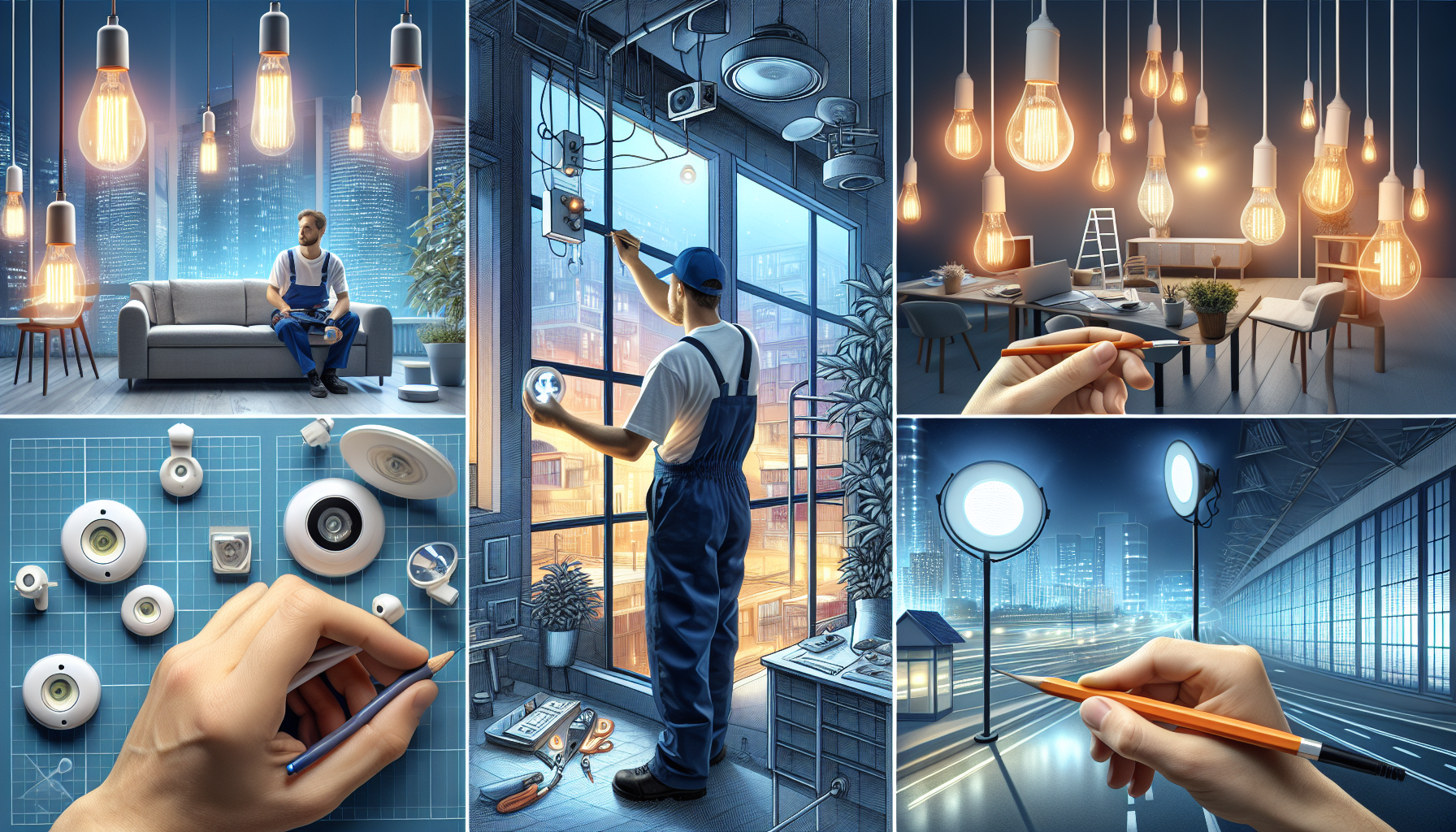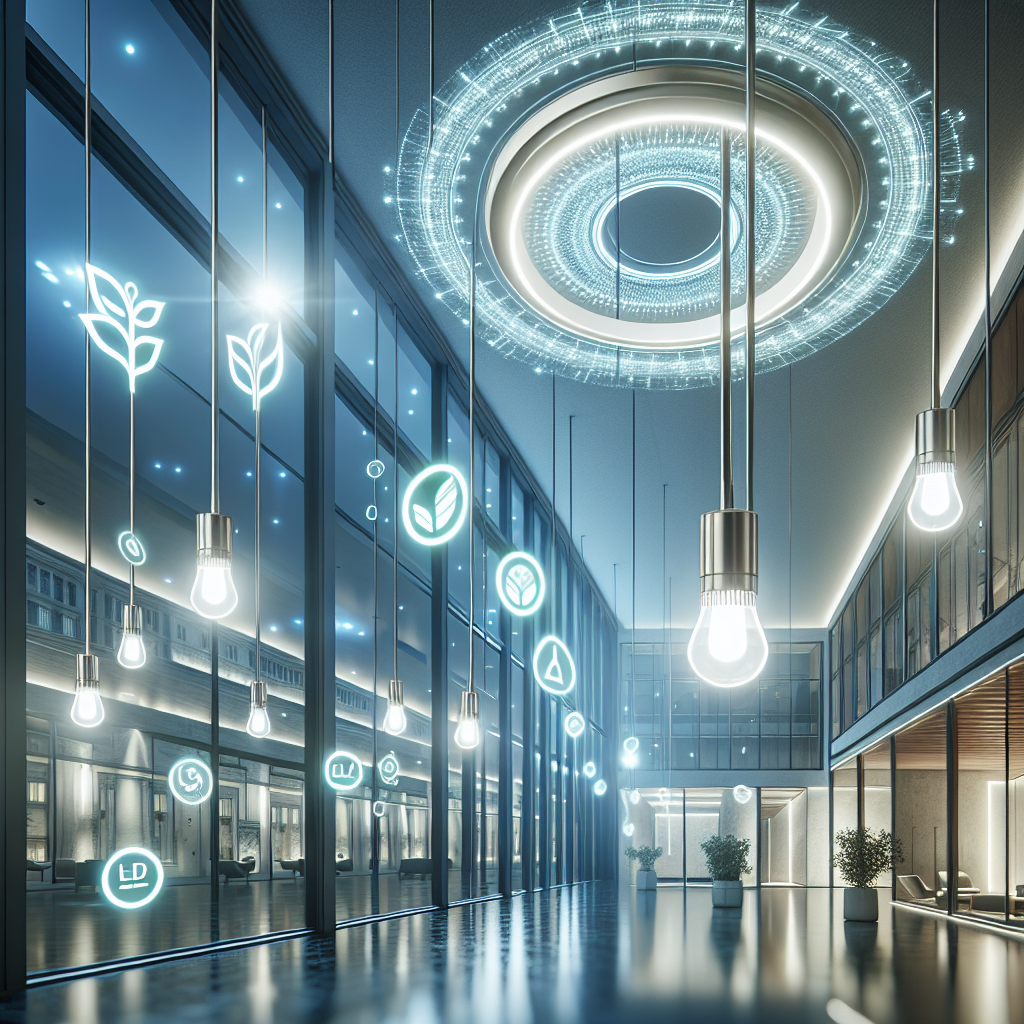Understanding Energy-Efficient Lighting Systems
Energy-efficient lighting systems have become a cornerstone in efforts to reduce global energy consumption and environmental impact. With lighting accounting for approximately 15-20% of global energy use, the shift towards efficient lighting solutions has significant potential to cut energy costs and emissions. Energy-efficient lighting balances the needs for effective illumination with a commitment to sustainability and resource conservation.
Definition and Purpose
Energy-efficient lighting refers to lighting technologies that consume less energy compared to traditional lighting systems, such as incandescent bulbs. These advanced lighting systems are designed to maintain or even enhance the quality and quantity of light despite using significantly less power. This is crucial in today’s environmental context, where every effort to reduce carbon footprints contributes to combating climate change. By adopting energy-efficient lighting, users can significantly lower electricity bills and reduce greenhouse gas emissions.
Types of Energy-Efficient Lighting
In the realm of energy-efficient lighting, several types stand out for their effectiveness and widespread use:
- Compact Fluorescent Lamps (CFLs): CFLs have been a popular choice for those seeking to reduce energy consumption without sacrificing light quality. These lamps function through a gas reaction involving a mixture of argon and mercury vapour that, in conjunction with an internal ballast system, produces light. The process results in UV light being converted into visible light by a fluorescent coating, offering a considerable energy-saving benefit compared to incandescent lighting.
- Linear Fluorescents: While less commonly discussed in mainstream conversations about energy efficiency, linear fluorescent lights are an option for high-energy savings, often used in commercial and industrial settings where larger areas require consistent lighting.
- Light Emitting Diodes (LEDs): As the most energy-efficient lighting technology available today, LEDs draw up to 90% less energy than traditional incandescent bulbs. LEDs generate light through electroluminescence; they employ a semiconductor device to illuminate diodes directly when an electric current passes through. This technology not only boasts an impressive average lifespan of about 25,000 hours but also offers features like instant-on abilities, precise directional light distribution, and a broad spectrum of colours.
Benefits
Switching to energy-efficient lighting systems ushers in a multitude of benefits:
- Reduced Operating Costs: By consuming less electricity, energy-efficient lighting systems substantially decrease energy bills. LEDs and other energy-saving technologies allow households and businesses to maintain effective lighting without enduring the extensive energy costs associated with less efficient options.
- Lower Carbon Emissions: These systems contribute significantly to reducing greenhouse gas emissions. By consuming less power, they lessen the burden on power plants and thus decrease the generation of carbon emissions, aligning with global sustainability goals.
- Longer Lifespan: The longevity of energy-efficient bulbs stands out as one of their most pronounced benefits. Especially noteworthy are LEDs, whose lifespan extends up to 25 times longer than traditional bulbs, reducing the frequency of replacements and thus the overall environmental impact.
- Improved Lighting Controls: Modern energy-efficient lighting systems often feature advanced controls, such as timers, motility sensors, and daylight sensors, optimising their use and efficiency. These controls ensure lighting is used only when necessary, thereby conserving energy.
Implementation
Implementing energy-efficient lighting involves strategic upgrades and adjustments to existing systems:
- Re-lamping: This is a straightforward yet effective method of transitioning to energy efficiency. Replacing traditional incandescent bulbs with modern alternatives like CFLs and LEDs is the first step towards significant energy savings.
- Upgrading Fixtures: Existing lighting fixtures can be improved to support more energy-efficient bulbs. This involves ensuring that the fixtures are compatible with newer, more efficient bulb types.
- Advanced Lighting Controls: Incorporating advanced lighting controls like dimmers, timers, and sensors can further enhance energy savings. Investing in electronic chokes instead of traditional ballasts can also aid in making lighting systems more efficient.

The Role of Ratio Seven
Ratio Seven Limited is recognised in the UK for its expertise in energy and building consultancy services. Established in 2008 by Colin Francomb, Ratio Seven has deep roots within the house-building industry and a penchant for providing solutions that incorporate energy-efficient lighting into building projects.
- Services and Expertise: Ratio Seven offers a comprehensive range of services tailored to meet the energy efficiency needs of various projects. This includes working on rural prestige housing developments, converting dilapidated barns and outbuildings, and facilitating large-scale residential site projects.
- Growth and Commitment: Since its inception, Ratio Seven has steadily grown, maintaining a diverse portfolio that highlights its depth of knowledge and experience in energy efficiency. The company is committed to delivering high-quality consultancy services to both new and existing clients.
- Future Plans: Continually advancing its offerings, Ratio Seven aims to launch new services focused on enhancing energy efficiency in building projects. This will include implementing cutting-edge technologies and practices that promote sustainability without compromising on quality or aesthetics.
Frequently Asked Questions (FAQs)
What are the main types of energy-efficient lighting systems available today?
The primary types of energy-efficient lighting systems include Compact Fluorescent Lamps (CFLs), Light Emitting Diodes (LEDs), and linear fluorescents. Each offers varying degrees of energy savings and has distinct advantages and applications. LEDs are the most energy-efficient, offering significant reductions in energy use and carbon emissions.
How do energy-efficient lighting systems help in reducing carbon emissions?
Energy-efficient lighting systems consume less energy, leading to reduced demand on power plants. Power plants are primary sources of carbon emissions, so by lowering the demand for electricity, energy-efficient lighting indirectly contributes to reducing these emissions, aiding environmental conservation efforts.
Can businesses benefit financially from switching to energy-efficient lighting systems?
Yes, businesses can see substantial financial benefits from switching to energy-efficient lighting systems. Cost savings come from lower electricity bills and reduced maintenance costs due to the longer lifespan of energy-efficient lighting like LEDs. Over time, these savings can significantly offset the initial investment in upgrading lighting systems.
What role does Ratio Seven play in implementing energy-efficient lighting solutions?
Ratio Seven plays a pivotal role in energy and building consultancy, offering services that include the integration of energy-efficient lighting into various building projects. With their industry expertise, they guide clients through the transition to more sustainable lighting solutions, ensuring both efficiency and aesthetic goals are met. Their commitment to environmental sustainability makes them a trusted partner in the journey towards energy-efficient construction and renovation.
Are there any drawbacks to energy-efficient lighting systems?
While energy-efficient lighting systems have numerous benefits, there can be upfront costs associated with purchasing and installing these technologies. However, these costs are often balanced by long-term savings on energy bills and reduced maintenance requirements. Additionally, some individuals may find the initial investment financially challenging, though many organisations offer incentives or subsidies to ease this transition.
In conclusion, energy-efficient lighting systems are an integral part of reducing energy consumption and greenhouse gas emissions globally. LED technology, in particular, stands out for its superior efficiency, longevity, and versatility. Ratio Seven Limited’s expertise and commitment to sustainability can help in leveraging these benefits across various building projects, paving the way for a greener future. By adopting these advanced lighting solutions, both individuals and businesses can contribute to a more sustainable world while enjoying reduced operational costs and enhanced lighting quality.




